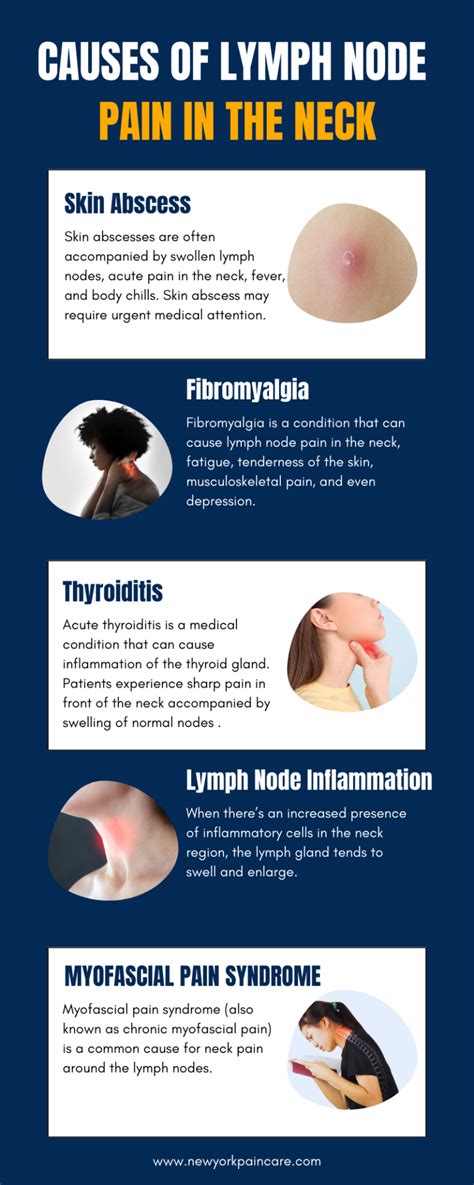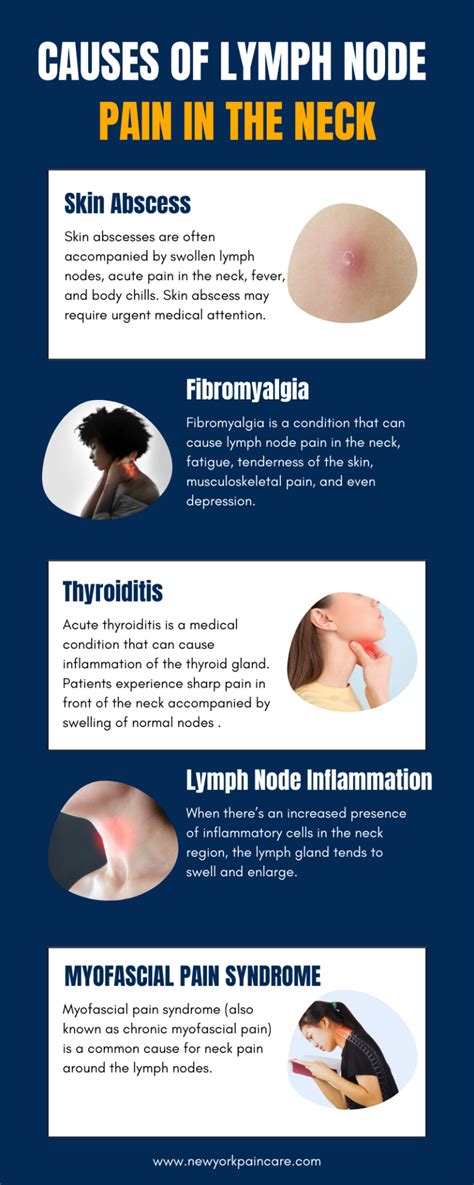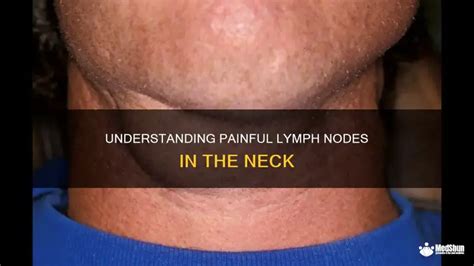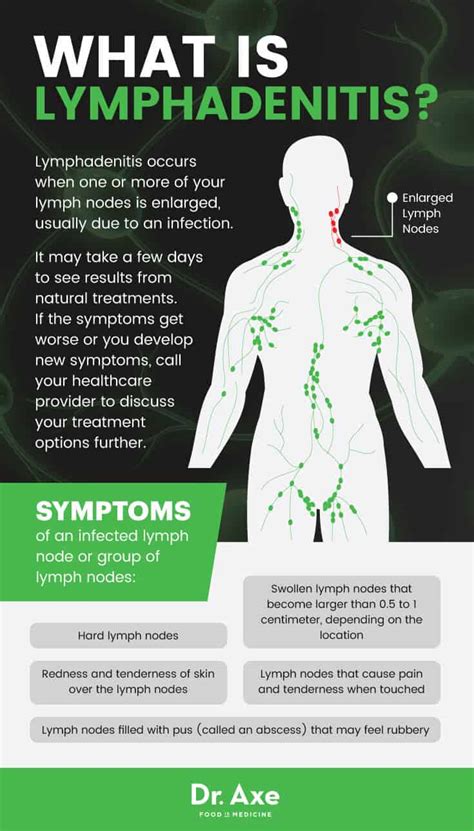Intro
Lymph nodes are small, bean-shaped structures that are part of the body's lymphatic system, which helps to fight infection and disease. They are located throughout the body, but are most commonly found in the neck, armpits, and groin. When lymph nodes become swollen or inflamed, it can be a sign of an underlying infection or illness. In some cases, lymph nodes can also become painful, which can be a source of discomfort and concern for those who experience it.
The pain associated with lymph nodes can vary in severity and location, depending on the underlying cause. For some people, the pain may be mild and temporary, while for others it can be severe and persistent. In addition to pain, swollen lymph nodes can also cause other symptoms such as fever, fatigue, and swelling in the affected area. Understanding the different ways that lymph nodes can hurt can help individuals better navigate their symptoms and seek appropriate medical attention when needed.
Lymph nodes play a crucial role in the body's immune system, acting as filters to trap and remove harmful substances and cells. When they become overwhelmed or infected, it can lead to a range of symptoms, including pain. The pain associated with lymph nodes can be a sign of an underlying infection, such as a cold or flu, or a more serious condition, such as cancer. In some cases, the pain may be related to an injury or trauma to the affected area, which can cause the lymph nodes to become inflamed and painful.
Understanding Lymph Node Pain

Types of Lymph Node Pain
There are several types of lymph node pain, each with its own unique characteristics and underlying causes. Some of the most common types of lymph node pain include: * Acute lymph node pain: This type of pain is typically sharp and stabbing, and is often associated with an underlying infection or illness. * Chronic lymph node pain: This type of pain is typically dull and aching, and can be persistent and long-lasting. * Referred lymph node pain: This type of pain is felt in a location other than the affected lymph node, and can be caused by a range of underlying factors, including injury or trauma to the affected area.Causes of Lymph Node Pain

Symptoms of Lymph Node Pain
The symptoms of lymph node pain can vary depending on the underlying cause and location of the affected lymph node. Some common symptoms include: * Pain or tenderness in the affected area * Swelling or inflammation in the affected area * Redness or warmth in the affected area * Fever or chills * Fatigue or weakness * Weight loss or loss of appetiteDiagnosis and Treatment of Lymph Node Pain

Home Remedies for Lymph Node Pain
In addition to medical treatment, there are several home remedies that may help to alleviate lymph node pain. Some of these remedies include: * Applying warm compresses to the affected area * Taking over-the-counter pain medication * Getting plenty of rest and avoiding strenuous activity * Eating a healthy and balanced diet * Practicing stress-reducing techniques, such as meditation or deep breathingPrevention of Lymph Node Pain

Risk Factors for Lymph Node Pain
There are several risk factors that may increase the likelihood of developing lymph node pain. Some of these risk factors include: * Age: Lymph node pain is more common in older adults * Weakened immune system: People with weakened immune systems, such as those with HIV or AIDS, are more susceptible to infections and illnesses that can cause lymph node pain * Family history: People with a family history of autoimmune disorders or other conditions that affect the lymph nodes may be more likely to develop lymph node pain * Lifestyle factors: People who smoke, are overweight, or have a sedentary lifestyle may be more likely to develop lymph node painComplications of Lymph Node Pain

Seeking Medical Attention
It is essential to seek medical attention if you are experiencing lymph node pain that is severe, persistent, or accompanied by other symptoms such as fever, chills, or weight loss. A healthcare professional can diagnose the underlying cause of the pain and provide treatment to alleviate symptoms and prevent complications.What are the common causes of lymph node pain?
+Lymph node pain can be caused by a range of factors, including infections, injuries, autoimmune disorders, cancer, and allergies.
How is lymph node pain diagnosed?
+Diagnosing the underlying cause of lymph node pain typically involves a combination of physical examination, medical history, and diagnostic testing.
What are the treatment options for lymph node pain?
+Treatment for lymph node pain will depend on the underlying cause, but may include antibiotics, pain medication, anti-inflammatory medication, and surgery.
Can lymph node pain be prevented?
+While it may not be possible to completely prevent lymph node pain, there are several steps that can be taken to reduce the risk of developing it, such as practicing good hygiene, getting vaccinated, and managing underlying medical conditions.
What are the complications of untreated lymph node pain?
+Untreated lymph node pain can lead to several complications, including abscesses, cellulitis, sepsis, and cancer.
